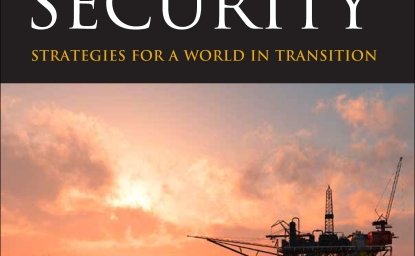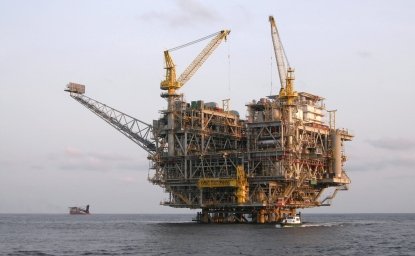Given rapid changes in both the energy and climate landscapes in the two years since Energy and Security: Strategies for a World in Transition was published, it should come as no surprise that debates over how the two influence each other continue to evolve too. At the time of this writing, the world is preparing to gather in Paris at the twenty first conference of the parties to the United Nations Framework Convention on Climate Change (COP-21) to iron out a new climate agreement, while energy analysts and industry gaze into a cloudy crystal ball to figure out where oil markets in particular are heading. This collision of continued focus on U.S. tight oil and shale gas with increased attention to climate has yielded new thinking in two areas in particular.
Environmental Impacts of Shale Oil and Gas
Political controversy over development of shale gas and oil has only intensified since the first edition of this book. The basic facts about the local impacts of development, though, have remained similar, with good regulation and management still central to balancing risk and opportunity.
The most significant local environmental issue to emerge has been induced seismicity – the triggering of small to medium sized earthquakes by inappropriate disposal of water produced in the tight oil and shale gas development process. This has been most notable in Oklahoma, where 36 events of magnitude four or more on the Richter scale (typically enough to rattle dishes, swing hanging objects, and rock stationary vehicles near the epicenter) were recorded between January 2014 and October 2015. Scientific studies have established a clear causal link between injection of wastewater in certain underground wells and seismic activity. Research suggests, however, that earthquake risk can be reduced by monitoring injection carefully and scaling back operations in the event of tremors. As with most other local impacts, significant induced seismicity can be avoided with well-enforced regulation; given that seismic activity ignores state boundaries, it may be an appropriate target for federal regulation.
The other area of environmental controversy surrounding U.S. oil and gas development is its climate impact. In the first edition of this book, I wrote that abundant gas was driving down emissions, making gas a clear win for climate change. Several strands of research since then have called that into question. In particular, projections developed with a wide range of models have consistently concluded that simply making natural gas more abundant is likely to have little net impact on emissions. (This research has focused mainly on U.S. production, though some has looked at the global picture too.) This is because, in addition to displacing coal, cheap natural gas both displaces zero-carbon energy (usually a relatively small effect) and boosts energy consumption overall. This second dynamic, often a strong one, happens through a mix of lower efficiency, higher economic growth, and a greater relative role for energy-intensive industry in the overall economic mix. The takeaway from this research, though, should not be that abundant natural gas is neutral to efforts to deal with climate change. Rather, cheap natural gas should be seen as a tool with which policymakers can reduce emissions, instead of as a substitute for policy. This has already manifested itself in the United States, where new regulations requiring that power plants reduce their emissions have been predicated on the availability of cheap gas as a substitute for coal. It could potentially be used elsewhere if liquefied natural gas (LNG) prices remain as low as many observers expect.
In the United States, export policy has emerged as a newly prominent focus in the debate over climate impacts of oil and gas development. When the first edition of this book was published, that debate focused on natural gas; as this update goes to print, attention has shifted to oil. Most credible studies point to little net climate impact from allowing oil exports (a corollary of that fact that the same studies project limited impact on oil production and prices). But, like approval of the Keystone XL pipeline, a decision to allow or restrict oil exports is discrete and unavoidable, making it a natural focus for a political fight. This reinforces an essential feature of fights at the intersection of oil and gas production and climate change: they are likely to revolve around political targets of opportunity, either for hydrocarbon producers or environmental campaigners, rather than focusing holistically on the broader tradeoffs involved.
Oil Price Collapse
The biggest energy event of the last two years, of course, was the collapse of oil prices that begun in 2014. Climate and environment debates have not been spared its impact.
In the first edition of this book, I argued that so long as gains in U.S. oil production were balanced by curbs to oil production elsewhere, the climate impact of new U.S. output would be minimal. Decisions by OPEC members to maintain or slightly increase production in the face of the U.S. supply surge, which triggered the price crash, make clear that assuming an offsetting response from non-U.S. oil production is wrong. This is particularly true in the short run. Long run consumption, though, is what matters most for climate change. It is not yet clear how long run dynamics will unfold. In particular, while non-U.S. production has not pulled back to accommodate increased U.S. production, the net result has primarily been increased accumulation of oil in storage rather than increased consumption. This suggests that, in the long run, the net impact of higher U.S. oil output on world oil consumption may still turn out to be modest.
The collapse in oil prices has triggered a second set of climate-related concerns: worries that low-carbon technology deployment and innovation will be slowed. This threat is most direct for biofuels and efficient vehicles, which compete directly with oil. In most major emitting countries, both are spurred not only by price but also policies, which limits the potential impact of low oil prices on their commercial prospects. Nonetheless, in the United States, consumers have already begun to shift purchases from cars to (less efficient) light trucks, and biofuels producers have struggled under the weight of low gasoline prices.
Other low-carbon energy sources – particularly renewable energy and other electricity generation – only compete directly with oil in the small slice of the global economy that uses substantial amounts of oil for electricity production. (This is concentrated in the Middle East.) For them the bigger challenge is falling prices for natural gas. In the short run, falling oil prices have dragged down natural gas prices in Asian and European markets where natural gas prices are determined by formulas anchored in the price of oil. In the United States, falling oil prices have prompted reduced oil drilling, lowering costs across the oil and gas industry, in turn dragging down natural gas prices too. In many markets, natural gas prices set the price of electricity, particularly during peak hours (often a critical time for solar power production), meaning that lower natural gas prices mean weaker economics for renewable energy. As with biofuels and efficient vehicles, though, supportive policies typically insulate renewable energy from the full brunt of these market forces.
The oil price collapse has been mixed news for the local environment. Its most immediate effect has been positive: lower oil prices have made it less attractive to drill in remote, and often environmentally contentious, places. Most notably, after a $7 billion drilling campaign executed in the face of massive opposition from environmental groups, Shell announced in September 2015 that it was halting offshore Arctic oil exploration. While public pressure and regulatory risk undoubtedly contributed to that decision, the overwhelming force dissuading Shell from continuing its Arctic efforts was the price of oil, which had dropped to half of its previous level. Canadian oil sands development, long a target of environmentalists for its local impact, also slowed in response to the price collapse. While the long run impact of U.S. shale on other oil development may not be as extreme, for a given amount of world oil consumption, more U.S. shale development ultimately means less development – and less environmental impact – elsewhere.
Weighing in the opposite direction is the possibility that cash-strapped companies will be more resistant to environmental regulation. There is no clear evidence for such a trend, but in general, small compliance costs will be more threatening to companies with thin margins (or that are losing money) than to ones that are flush. One might also see relaxation of environmental rules globally as countries compete to attract investment in oil production in a world where the need for new production growth outside the United States and the low-cost oil producers has shrunk.
Conclusion
This reinforces a theme that remains as essential as it was when Energy and Security: Strategies for a World in Transition was first published. Big changes in oil and gas inevitably affect environmental and climate outcomes through their direct impact on energy markets. But they also shape the political environment in which policy choices are made – and it is those policy choices, as much as or more than the direct market developments themselves, that determine the ultimate environmental and climate consequences of these developments.
Michael Levi is David M. Rubenstein Senior Fellow for Energy and the Environment and Director, Maurice R. Greenberg Center for Geoeconomic Studies, at the Council on Foreign Relations. He has been a science and technology fellow at the Brookings Institution and has also served as director of the Strategic Security Project at the Federation of American Scientists.
Author
Explore More
Browse Insights & Analysis
Energy and Security: Strategies for a World in Transition

La esencia de la infraestructura global: perspectivas del líder de la industria Matt Harris

